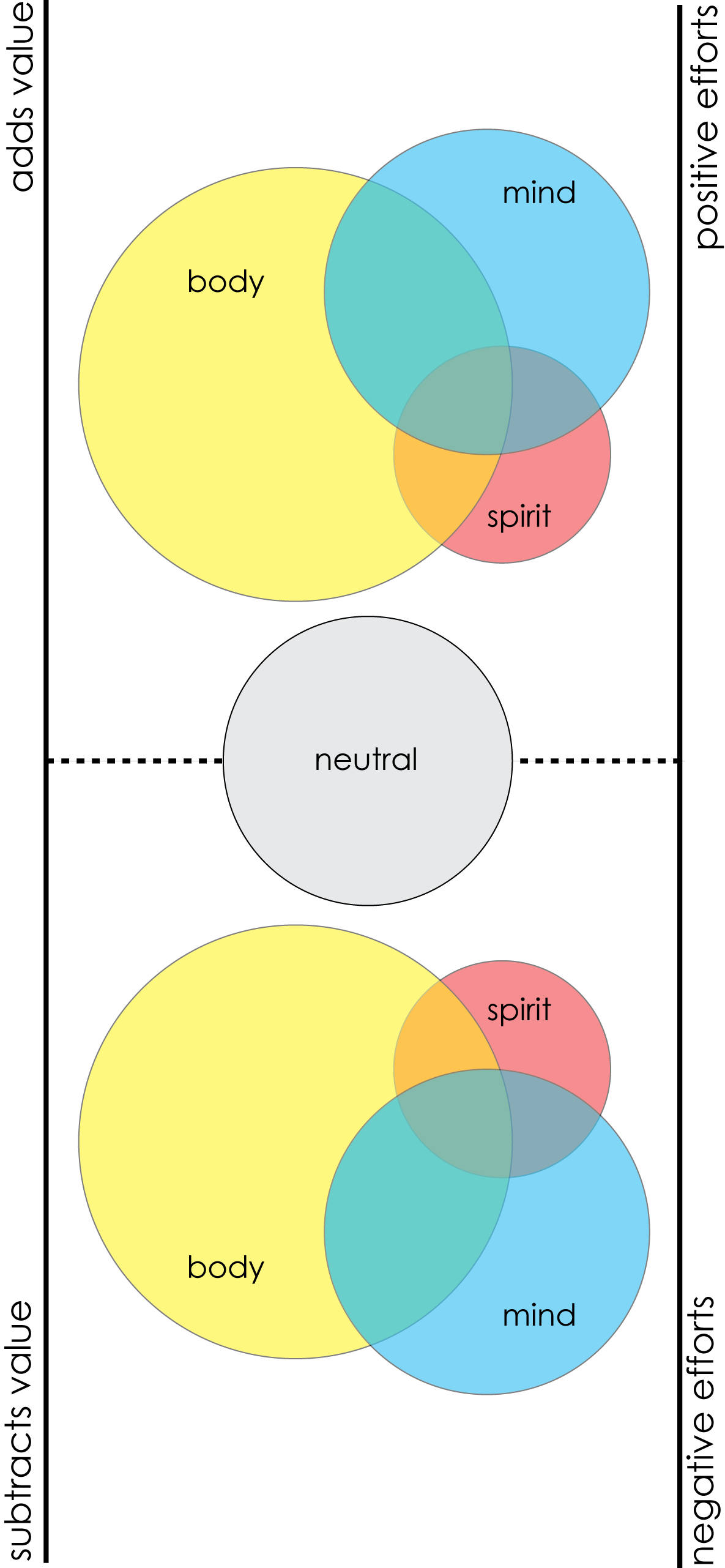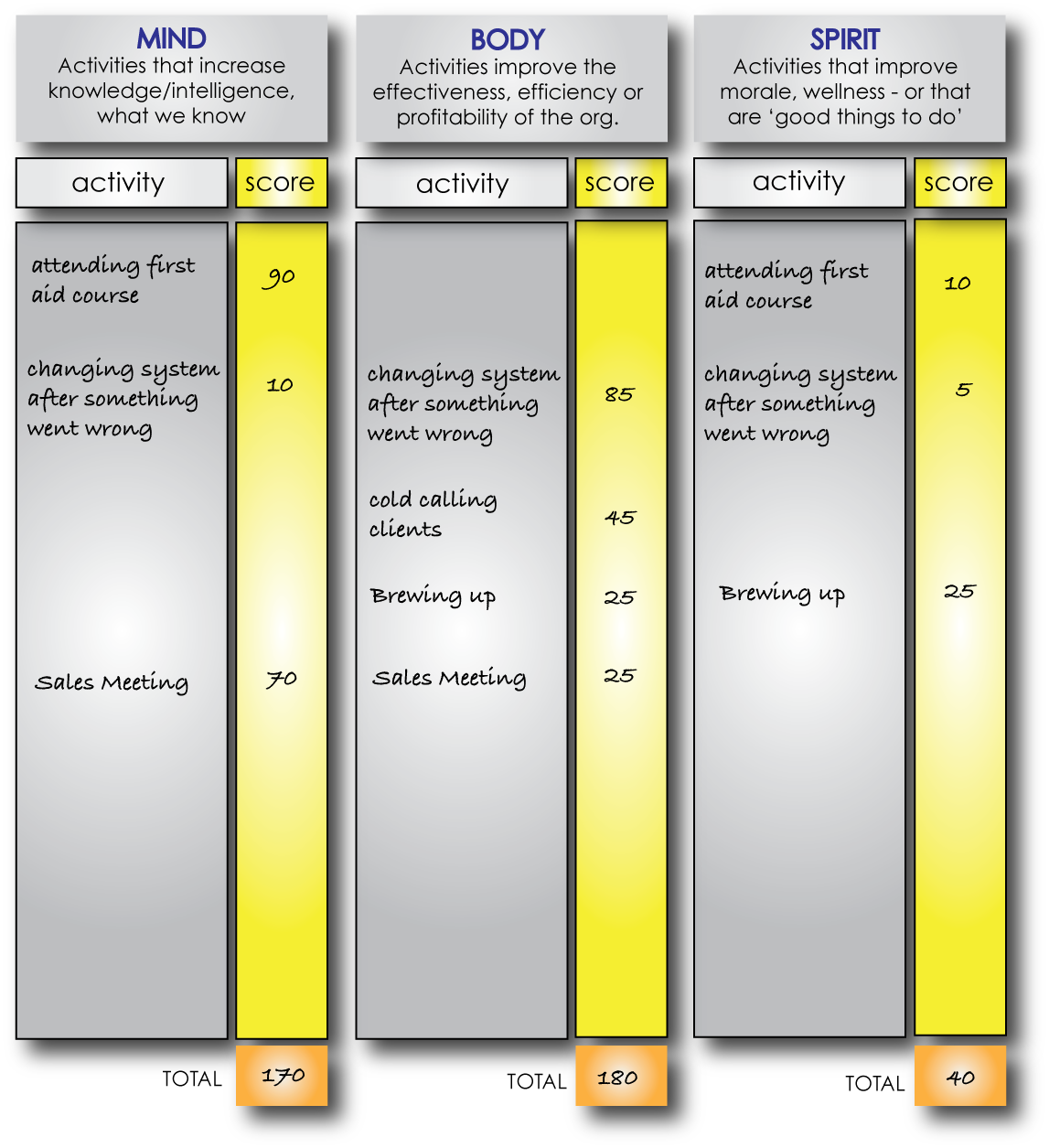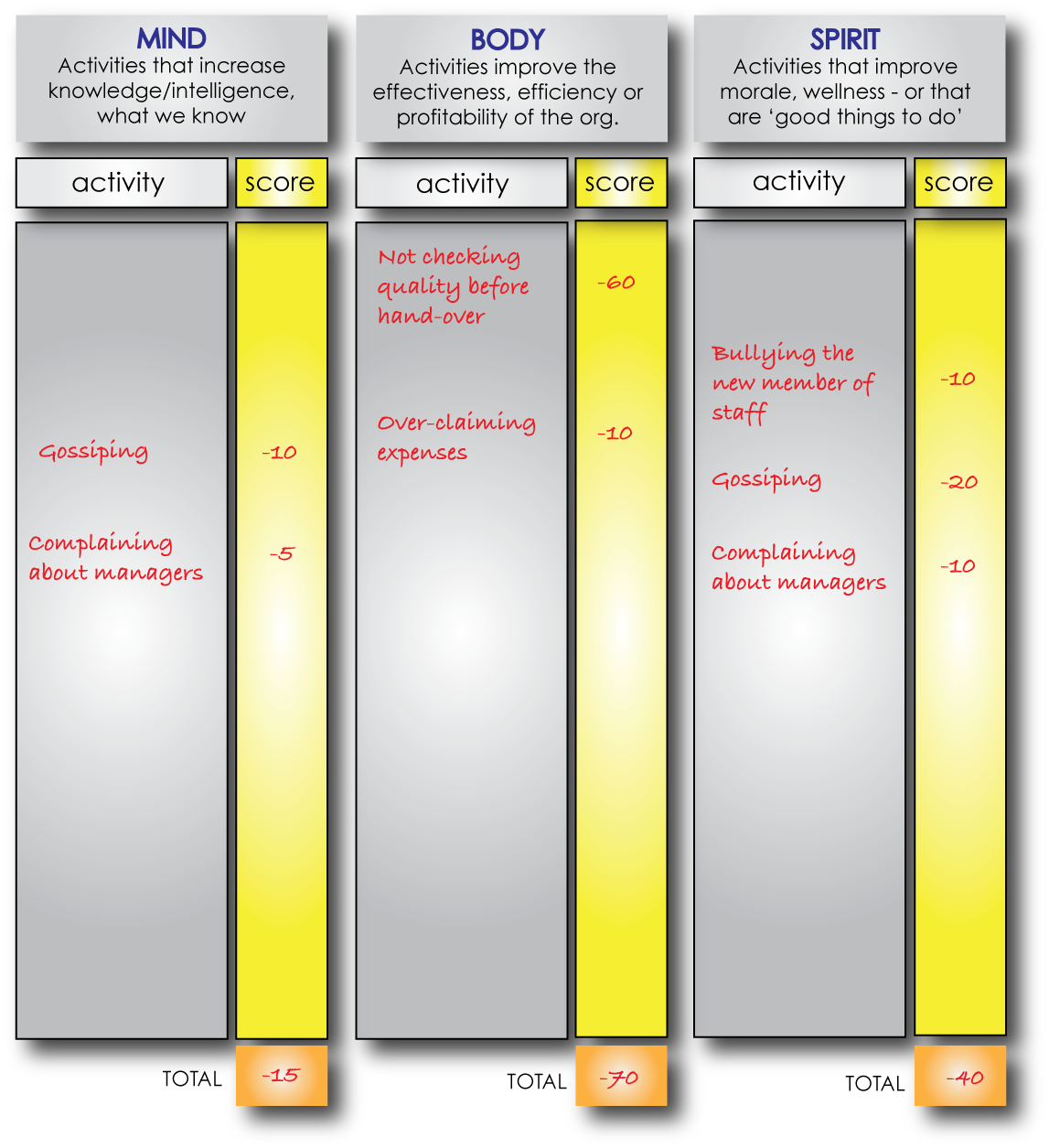getting your priorities straightGetting Your Priorities in OrderLooking at Organisational ActivitiesMany organisations don’t spend nearly enough time considering whether its daily activities are actually helping take the organisation forward. Stop and take a look at all the things your organisation does, and in particular at all the activities that you and your team fill their days with. How many of them add or create value to the organisation? Hand on your heart, how many might be considered as a waste of time? Value Adding: if you start with a basic raw material and through the activities of your organisation turn that into something you can sell – then each stage of production adds a certain amount of value. Similarly, in a service, parts of the organisation that positively contribute to putting together and delivering the service can be said to be adding value. Activities that do not add value either specifically to the product/service or to the wider organisation might be considered as waste. The key question to ask is whether the business would be harmed if you no longer carried out a non value-adding activity. Value Creating: when you add value to the product/service or to the wider organisation by doing something new or different, this can be said to be creating new value. So, an organisation that creates a whole new product line, or radically changes its method of production can be said to be creating value. So, the key question to ask of each activity is whether it adds value or creates new value. If the answer is ‘yes’ to either, then the next question is how much. Is it worth continuing putting a lot of effort into something that only generates a little bit of value? That’s a question you must ask of every value-adding activity. If the answer is ‘no’ then the next question must be whether to discontinue with it.
What is the Core Purpose of the Organisation?Thinking about why the organisation was created in the first place, and the various objectives listed in business and strategic plans, the question to ask is whether the organisation is actually doing what it is meant to be doing. Do you fulfil the basic requirements of your organisation, or are you distracted by other things?
What Activities Derive the Most Value?You must be able to measure value one way or another. Most often, value is measured in financial terms – by the amount of money it adds to the bottom line. In many ways, that’s too simplistic a measure, because there are some activities that add value in a non-financial sense (e.g. learning new skills, or generating intelligence about the market is valuable to the organisation but might not immediately add to the bottom line). Think about value in three ways: Mind – whether the activity adds to the collective knowledge or intelligence of the organisation. Body – whether the activity makes the body of the organisation fitter or stronger. Think about whether an activity creates profitability, increases effectiveness or improves efficiency. Spirit – whether an activity adds something to the organisation in terms of improving moral, or whether it is a ‘good thing to do’. Often these activities are not profitable, and may even take energy away from more profitable activities, but they do contribute to overall fabric of the organisation. Think about everything your organisation does and:
How Much Time do you Spend on Each?Time is often one of the scarcest resources available to you. It is critical that you and your team spend your time wisely. Remember that every activity undertaken during working hours is a work activity – even if it is time spent updating status on a social networking site, brewing up or having a conversation at the water cooler. This is just as much work activity as making a sales call. Measure how much time and effort is put into each activity. Be absolutely honest about it. Your aim, here, is to understand the proportion of time you collectively spend on each aspect of your business. Do you spend proportionally more time on those activities you consider to be the most important? Do you spend disproportionate amounts of time and energy on activities that do not add value? Don’t turn this into a time and motion study. It’s not about measuring time and energy on a minute-by-minute basis. It is just as useful to understand broadly how time is spent.
Work Out an Appropriate BalanceGetting the balance right is the hardest part of this. Thinking in terms of mind, body and spirit, you will probably want to do a little of something of each. There are no hard and fast rules to follow, so to a large extent you’re on your own. You have to create the balance that’s right for you, thinking about the kind of organisation you are and what you believe you need to achieve. The Pareto principle suggests that 80% of value is derived from just 20% of activity (the so-called 80:20 rule). Be definition, then, 80% of what you do generates just a fifth of your total value. A fair bit of this 80% of activity is therefore waste. What if you could turn it into value-adding energy – would that increase the total value of your organisation?
Business Energy AccountWe designed the Business Energy Account (BEA) as a tool to help us better understand how time and energy is spent in an organisation. First, it is helpful to identify value in terms of mind, body and spirit. If you feel uncomfortable with the terminology think of it in hard business terms:
Next, think about whether each activity has a positive or negative effect on the overall organisation. This is a tool that will allow you to look at your total business and see the effects of each activity you undertake. This becomes a really useful tool when you look at the results in the context of where your organisation derives most of its value. So, for example, you might identify that most value is generated from ‘new sales’, and you might be wondering why you are not as effective as you might be. The business energy account might show that your organisation spends 10% of its total effort on generating new sales, but 30% of its effort communicating with existing clients. Whilst the latter is undoubtedly important, you might be able to scale it back to some degree to enable more effort to go into new sales.
In a sense, every effort made is positive, but the real question is whether it has a positive or negative impact on the business. Spending time designing better ways to undertake your business is clearly positive energy that has a positive impact. Bullying, however, is positive energy that has a negative impact. A successful organisation is one where the positives far outweigh the negatives. Don’t try to completely get rid of negative efforts – because they can be useful overall. It’s all a matter of getting things into balance.
The Account Start by listing each activity you undertake as an organisation. Remember all activities (whether official or not) undertaken either by the organisation or its people during working hours is the same as organisational activity. Equally, anything done by people for the business outside working hours is also organisational activity. Use a chart like the one in the diagram, below. Place each activity into one or more of the three categories. An activity might contribute to more than one category. Give each activity a score, e.g. between 0 and 100, where 0 = doesn’t have any value, and 100 = absolutely critical to success. Decide its total score based on its total value to the organisation – so an activity with low importance would have a low score (e.g. 10), where an important activity might have a high score (e.g. 90). If an activity is spread across multiple columns divide its total score across the columns.
You will be able to do two things with your list. First, you’ll be able to rank each activity and create a list of those things you consider to be important. Second, you’ll be able to see how much your effort business puts into key activities. In the example list in the diagram, this organisation puts almost as much effort into ‘mind’ activities as it does into ‘body’ activities. It probably has its ‘spirit’ activities into the correct proportion. The question would be whether this organisation needs to scale back some of its ‘mind’ activities so it can concentrate more on the ‘body’ .
Having plotted all the positive activities, it is useful to add negative activities to the list. Use the same method, but allocated negative scores. In the diagram above, we’ve put them in red. Putting the two charts together you can see that the organisation puts 180 units worth of positive energy into maximising its body – but this is counterbalanced by -70 units of negative energy spent undoing the good work. What the Business Energy Account does is show the balance between the amount of time and effort you put into mind, body and spirit activities, so you can determine a good balance. It also allows you to analyse the effects of positive and negative efforts on your business.
Click the icon, below, to download a PDF page on Priorities. This One Minute Boost will remain on this website for free download until 13th March 2011. (c) 2011 Business & Knowledge Gym
|





